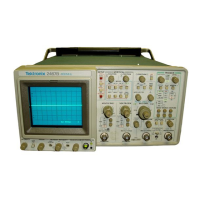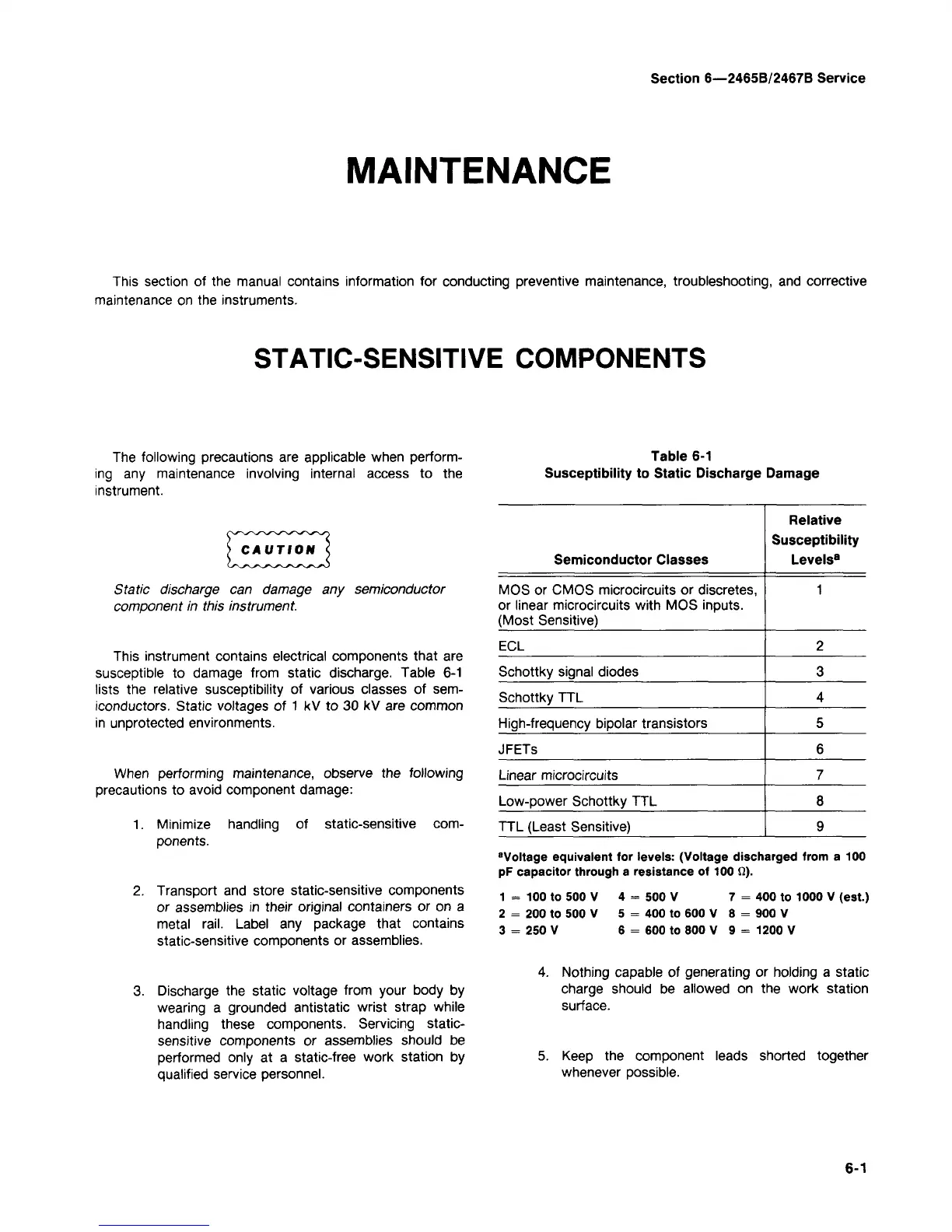Section 6—2465B/2467B Service
MAINTENANCE
This section of the manual contains information for conducting preventive maintenance, troubleshooting, and corrective
maintenance on the instruments.
STATIC-SENSITIVE COMPONENTS
The following precautions are applicable when perform-
ing any maintenance involving internal access to the
instrument.
Table 6-1
Susceptibility to Static Discharge Damage
Static discharge can damage any semiconductor
component in this instrument.
This instrument contains electrical components that are
susceptible to damage from static discharge. Table 6-1
lists the relative susceptibility of various classes of sem-
iconductors. Static voltages of 1 kV to 30 kV are common
in unprotected environments.
When performing maintenance, observe the following
precautions to avoid component damage:
1.
Minimize handling of static-sensitive com-
ponents.
Transport and store static-sensitive components
or assemblies in their original containers or on a
metal
rail.
Label any package that contains
static-sensitive components or assemblies.
Discharge the static voltage from your body by
wearing a grounded antistatic wrist strap while
handling these components. Servicing static-
sensitive components or assemblies should be
performed only at a static-free work station by
qualified service personnel.
Semiconductor Classes
MOS or CMOS microcircuits or discretes,
or linear microcircuits with MOS inputs.
(Most Sensitive)
ECL
Schottky signal diodes
Schottky TTL
High-frequency bipolar transistors
JFETs
Linear microcircuits
Low-power Schottky TTL
TTL (Least Sensitive)
Relative
Susceptibility
Levels
8
1
2
3
4
5
6
7
8
9
"Voltage equivalent for levels: (Voltage discharged from a 100
pF capacitor through a resistance of 100 il).
1 = 100 to 500 V 4 = 500 V 7 = 400 to 1000 V (est.)
2 = 200 to 500 V 5 = 400 to 600 V 8 = 900 V
3 = 250 V 6 = 600 to 800 V 9 = 1200 V
4.
Nothing capable of generating or holding a static
charge should be allowed on the work station
surface.
5. Keep the component leads shorted together
whenever possible.
6-1

